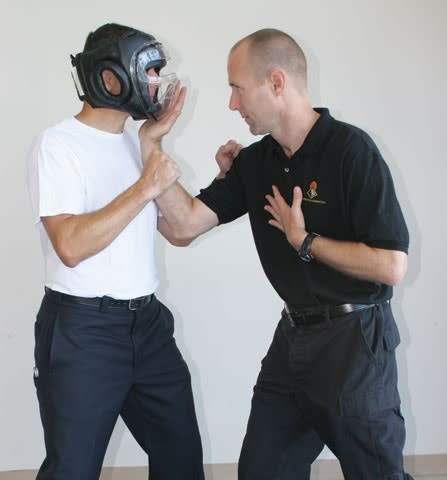Example: A situation starts as lethal with the bad guy going for the officer's gun; switches to less than lethal when the bad guy falls down; then reverts back to lethal once he's back up, in the fight, and again going for the officer's gun.
If the officer doesn't employ a move that effectively responds to the changing threat levels, the risk that the offender or the officer could be shot escalates, as the officer attempts to move in and out of lethal force paradigms with spur-of-the-moment inspiration...or desperation. By having a program that employs virtually the same dynamic delivery core moves in both defensive tactics and weapon retention applications, officers will not only be able to learn more quickly, but feel more confident as they adjust to changing threat levels in real encounters.
Keeping both skills in one set will at once simplify officer training and mitigate the likelihood of excessive force allegations, which often attach themselves in the aftermath of incidents such as when a bigger or more experienced street fighter assaults an officer, thereby precipitating the officer's use of lethal force.
Gross Motor Skills
Gross motor skills not only give you the ability to move from one place to another, they also serve as an emergency backup under stress. Adrenaline surges increase gross motor skills to the point where they're the only ones that function. Most of the diverted blood supply goes to the largest muscles-the stomach, the quads, and the chest-hampering dexterity and making it difficult to holster a weapon, shoot accurately, or block a punch. To compensate, officers need to incorporate preemptive adjustments in their training, emphasizing gross motor skills so that what they practice becomes easier to learn, apply, and retain.












